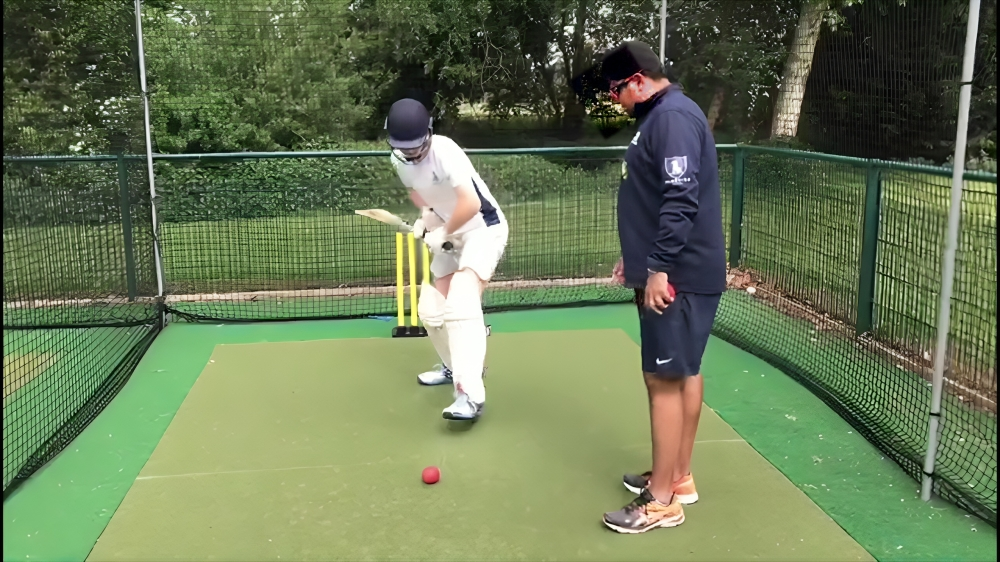Effective coaching is instrumental in driving performance and fostering development in any field, be it sports, academics, or professional endeavors. However, determining the optimal coach-to-athlete ratio is crucial for ensuring that each individual receives adequate attention and guidance while maximizing the collective progress of the group. In this article, we delve into the factors influencing coach ratio and strategies for optimizing it to achieve the best outcomes in terms of performance enhancement and personal development.Best Cricket Academy in Greater Noida.
To Know More About It Please Click Here
Factors Influencing Coach Ratio
- Individualized Attention: The primary goal of coaching is to provide personalized guidance and feedback to each participant. A lower coach-to-athlete ratio allows coaches to devote more time and attention to addressing the specific needs and challenges of each individual, thereby facilitating better skill development and performance improvement.
- Group Dynamics: The dynamics within a group can significantly impact the effectiveness of coaching. A smaller group size enables coaches to foster a stronger sense of camaraderie, teamwork, and accountability among participants, leading to enhanced motivation and engagement.
- Skill Level and Complexity: The complexity of the skills being taught and the proficiency level of the participants also influence the optimal coach ratio. Beginners or individuals learning complex techniques may require more one-on-one guidance and supervision, necessitating a lower coach-to-athlete ratio.
- Safety and Risk Management: In certain activities such as adventure sports or physical training, ensuring the safety of participants is paramount. A lower coach ratio allows for better supervision and risk management, reducing the likelihood of accidents or injuries.
Optimizing Coach Ratio Best Cricket Academy in Greater Noida.
- Assess Needs and Objectives: Before determining the coach ratio, it is essential to assess the specific needs, objectives, and skill levels of the participants. Conducting a thorough evaluation can help tailor the coaching approach and allocate resources effectively.
- Utilize Assistant Coaches or Specialists: In situations where a lower coach-to-athlete ratio may not be feasible due to resource constraints, leveraging assistant coaches or specialists can help distribute the workload and provide additional support to participants. Assistant coaches can focus on specific skill areas or provide individualized attention to smaller groups within the larger cohort.
- Implement Technology and Feedback Systems: Technology can be a valuable tool for optimizing coaching efficiency and effectiveness. Utilizing video analysis software, wearable devices, or online feedback systems can supplement in-person coaching and provide participants with valuable insights into their performance, allowing coaches to focus their attention where it is most needed.
- Foster Peer Learning and Mentorship: Encouraging peer learning and mentorship within the group can augment the coaching process and promote a culture of continuous improvement. Participants can learn from each other’s experiences, offer support, and provide constructive feedback, reducing the dependency on direct coach intervention.
- Continuously Evaluate and Adapt: The optimal coach ratio is not a static concept and may evolve over time based on various factors such as group dynamics, skill progression, and resource availability. It is essential to continuously evaluate the effectiveness of the coaching approach and be prepared to adapt and adjust the coaching ratio as needed to ensure maximum performance and development.
To Know More About It Please Click Here
Conclusion
Achieving maximum performance and development requires striking the right balance between providing individualized attention and leveraging group dynamics. By carefully assessing the needs of participants, utilizing available resources effectively, and fostering a culture of continuous improvement, coaches can optimize the coach ratio to facilitate meaningful progress and success for all involved. Ultimately, the goal is to empower individuals to reach their full potential while fostering a supportive and collaborative learning environment.Best Cricket Academy in Greater Noida.
The optimal coach ratio for sports teams depends on various factors such as the sport, skill level of athletes, and coaching approach. Generally, a ratio of 1 coach to 10-15 athletes allows for adequate individualized attention while still maintaining group dynamics and fostering team cohesion. However, in certain contexts, such as elite or specialized training, a lower ratio may be necessary to ensure personalized guidance and optimal performance development.
Coach ratio significantly impacts athlete development by influencing the amount of individualized attention and feedback each athlete receives. A lower coach ratio allows for more personalized guidance, leading to enhanced skill development, motivation, and performance outcomes. Conversely, a higher coach ratio may limit individual attention, potentially hindering progress and limiting the overall development of athletes.
While there are no universally agreed-upon coach ratio guidelines for different sports, recommendations often vary based on factors such as the nature of the sport, the skill level of athletes, and coaching philosophies. Generally, ratios ranging from 1 coach per 10-15 athletes for team sports to 1 coach per 1-5 athletes for individual sports are commonly suggested to ensure adequate attention and development opportunities for participants. However, these ratios can
When determining coach ratio, consider factors such as the skill level and age of athletes, the complexity of the sport, the availability of resources, and safety considerations. Additionally, evaluate the desired level of individualized attention, the coaching philosophy, and the goals of the training program to tailor the ratio to meet the specific needs and objectives of the athletes and the team.



